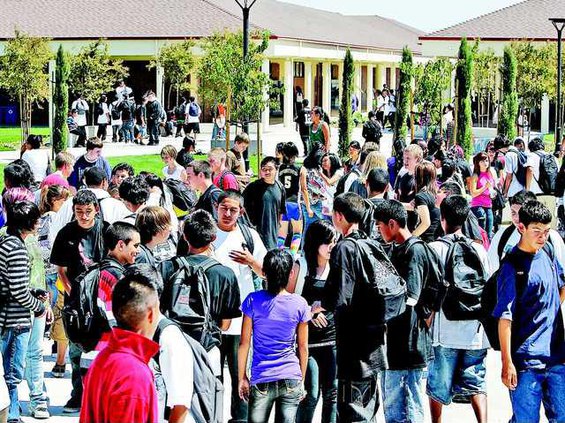Every day Aaron Bowers — the Manteca Unified School Director of Facilities and Operations — checks in with emergency personnel keeping a watch on the San Joaquin River.
The reason is simple. Just over a third of the district’s 23,505 students — 8,489 to be exact — attend schools located within the floodplain. Eight of those 10 schools could get in excess of 3 feet of water should levees fail based on 200-year flood projection maps.
Student safety, as Manteca Unified Deputy Superintendent Clark Burke notes, is the district’s top priority.
Bowers said the 7 a.m. briefings coordinated by the San Joaquin County office of Emergency Services aren’t as intense as they were several weeks ago after the initial levee breach south of Manteca was initially plugged by farmers. That said the district will continue to keep tabs on the situation over the coming months as a near record snow melt is expected to challenge levees.
Colby Clark — the Director of Information Technology who does double duty managing the districtwide safety management plan designed to deal with a wide array of emergencies — noted site administrators and key campus staff are well versed in flood protocols and evacuation routes.
In the event of a levee break school officials have been given a window of time before water could reach specific campuses. It depends, of course, where a levee break occurs. Even so the time frame is hours and not minutes as some may mistakenly believe given how fast water moves through a breach and then spreads out as well as the topography.
In 1997 when there was a concern levees near the San Joaquin River bend at the Mossdale Crossing might fail, California Office of Emergency Services estimated it would take floodwater seven hours to reach the French Camp Slough levees that provides the northern boundary of the Weston Ranch neighborhood in South Stockton.
All schools in Weston Ranch are with the areas that could get in excess of 3 feet of water in a 200-year flood event as are Lathrop High, Mossdale School and Joseph Widmer School. Lathrop Elementary School and French Camp School are in areas that could get between 1 and 3 feet. The 10th school on the list — Nile Garden in rural south Manteca — wouldn’t actually be flooded but it could be surrounded by up to 3 feet of floodwater. A large chunk of Nile Garden’s 512 students are bused from neighborhoods in the southern part of the City of Manteca. The rest of the students are from rural areas that for the most part would flood as it did in 1997.
Lathrop High is the only one of the 10 campuses that was “elevated” out of the 100-year floodplain by how the land was graded. The campus is within a quarter mile of the Reclamation District 17 levees that were upgraded in the event of a 100-yaer flood meaning there is a 1 in 100 chance in a given year that flooding at that level could take occur.
When the state mandated 200-year flood protection, it put Lathrop High back at risk.
Manteca Unified did cancel classes at Nile Garden School immediately after the OES issued evacuation orders last month when emergency crews were working to strengthen the levee patch made by farmers.
It was done 11.5 hours ahead of the first bell using the district’s phone tree and social media parental notification system. It was the most concise and effective emergency notification the evening of the breach and created no confusion.
Classes resumed a day later when OES personnel determined the levee patch would hold.
To contact Dennis Wyatt, email dwyatt@mantecabulletin.com
Manteca Unified keeps close eye on SJ River situation



